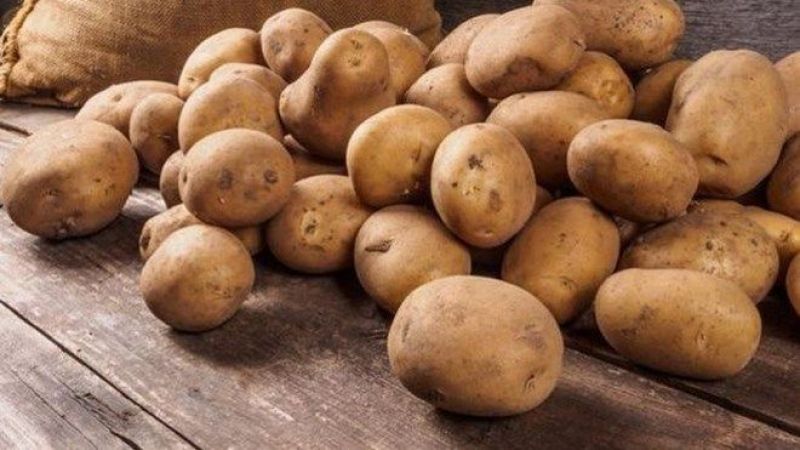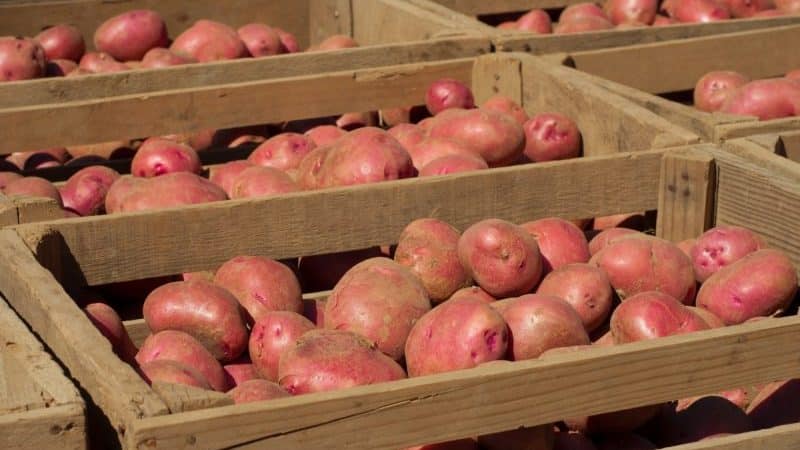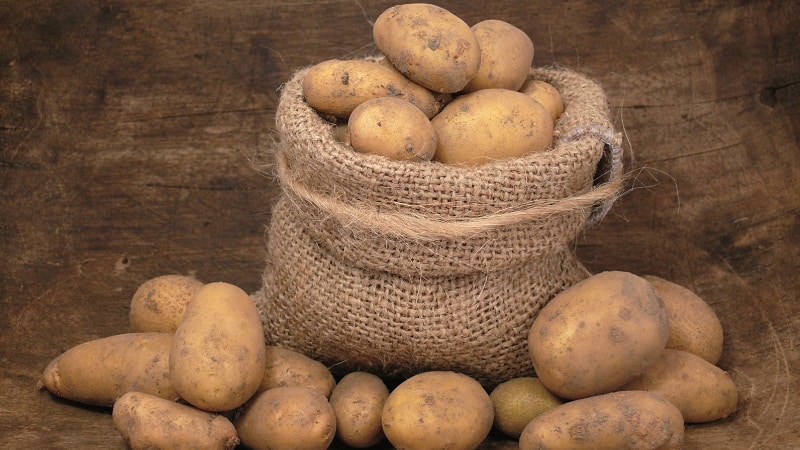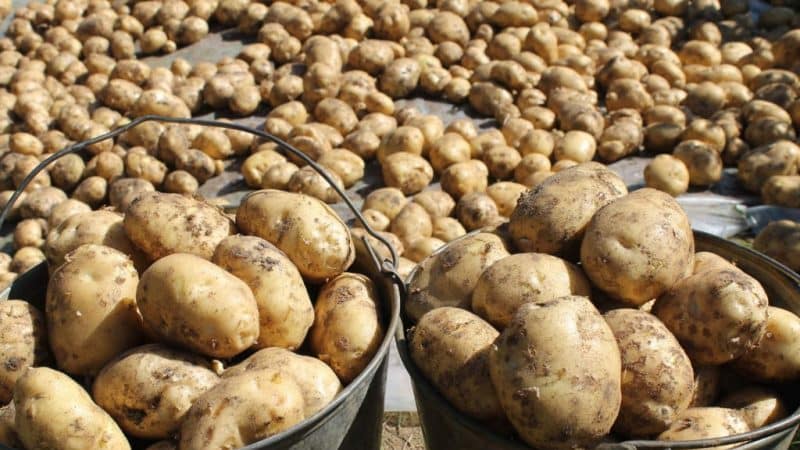Rules for storing seed potatoes: instructions for preparing seeds and optimal conditions
Potatoes are a vegetable that is grown in almost every homestead and summer cottage. To obtain a high yield, high-quality planting material is required. Therefore, it is important to correctly select and prepare seeds, create optimal conditions for them storageso that the sowing and yield qualities of the vegetable crop are not affected.
Rules and conditions for storing seed material
Experts recommend adhering to the following rules when storing seed potatoes:
- Dry and prepare the tubers well.
- Before laying, gradually reduce the temperature in the drying area.
- At the end of February or the beginning of spring, warm the seeds at a temperature of +14...+17°C so that they awaken after vegetative dormancy.
- Before planting, sort through the tubers again and remove damaged specimens.
During storage, temperature changes should not be allowed, as this shortens the dormant period of the planting material.
Dependence of variety and storage temperature
The choice of optimal temperature depends on the plant variety.
Attention! Deviation from recommended standards increases seed losses during storage.
A decrease in temperature negatively affects seed quality, and an increase leads to the germination of tubers and the development of diseases.

Rules for selecting seed potatoes
It is recommended to select planting material in the summer, when the vegetable crop is still blooming.Select and mark healthy and strong bushes. The tubers of such plants have good heredity. They are larger in size and disease resistant.
When selecting potatoes for seeds from under such bushes, adhere to the following rules:
- Avoid small tubers, as this contributes to the degeneration of the variety.
- Choose plants under which about 8-10 tubers have grown (half of them are large).
- The weight of seed potatoes reaches 100 g (the size of a goose egg). If possible, larger planting material is also selected.
- Potatoes should not be left for seed if rotten or diseased specimens were found in the bush. This vegetable is infected with a fungal disease.
All selected tubers are carefully examined to exclude the presence of damage, spots of rot and signs of disease.
Which varieties are suitable for long-term storage?
Early ripening potato varieties are poorly stored. Such a vegetable quickly becomes lethargic and loses its seed qualities.
The following varieties last well throughout the winter and do not germinate until spring:
- Gala. It has a spherical shape, light flesh and brown skin. The weight of the tuber reaches 120 g.
- Red Scarlett. Bred by Dutch breeders. The tuber is oblong, with a smooth surface. The pulp is white, the skin is red. The average weight of a tuber is 100 g.
- Nevsky. Potatoes are round in shape and yellow in color. When cut, the vegetable is pale cream in color. Grows up to 130 g.
- Picasso. A representative of the Dutch selection has a yellow skin with burgundy splashes. The potato reaches a weight of 120 g, its flesh is cream-colored.
- Crane. Produced in Belarus. The tuber is large, oval in shape, pink in color. Reaches 160 g.
Preparing seed potatoes for storage
Harvested potatoes cannot be stored immediately. The peel of this vegetable is still thin and not ripe enough. To make it denser and minor damage to heal, keep the seed in a well-ventilated place for two weeks.
It is also useful to green the seeds in the light. To do this, the tubers are laid out in one layer and periodically turned over. Daylight encourages the accumulation of corned beef in them. This is a poison, so potatoes become inedible for rodents, and their resistance to diseases increases.
Attention! Such tubers are unsuitable for human consumption.
After drying and ripening, the seed material is carefully inspected again, rejecting damaged specimens. To enhance immunity, the seeds are treated with one of the fungicidal preparations. For this purpose, Maxim or a weak solution of copper sulfate is often used.
When preparing the composition, 2 g of the substance is diluted in one bucket of water. After processing, the potatoes are well dried.

Preparing the premises
When using a cold method of storing potatoes in a cellar or basement, it is recommended to pre-disinfect the room. For brick walls use lime mortar. Use 5 kg of product per 2 buckets of water. To enhance the effect, add 100 g of copper sulfate to the composition. In its absence, use the industrial preparation “Anti-mold” or similar products.
If the surface is wooden, spray with a concentrated solution of potassium permanganate or copper sulfate (100 g per 1 liter of water). Tobacco decoction gives a good effect. Take 100 g of tobacco powder per 2 liters of water. The earthen floor in the room is sprinkled with lime. Any signs of mold that appear on the walls are removed using a blowtorch.
Other events are also held:
- Cover with cement mortar the cracks through which rodents can enter.
- Cover the ventilation hole with a metal mesh.
- Fumigated storage sulfur smoke.
The most effective method of disinfecting a room is used:
- The ventilation hole in the cellar is closed.
- Place a container into which quicklime is poured (2.5 kg per 10 m³).
- Close the door tightly.
- After three days, ventilate well.
All work is performed in a respirator.
Temperature conditions for storing potatoes
When storing seed material, the recommended temperatures are adhered to in order to preserve the seed properties of the vegetable crop and prevent premature germination.
If food tubers are stored at temperature +1…+3°С, then this indicator for seeds can be higher - +4…+6°С. Higher temperatures do not affect their germination and quality.
Containers for storing potato seeds
To store seed tubers use:
- Wooden boxes. They are practical and easy to use. Wood absorbs excess moisture well, and releases it when the humidity drops. If the container is made from coniferous wood, then it also has disinfecting properties, preventing the occurrence of diseases.

- Plastic boxes with holes. Provide good air ventilation when storing seeds. The containers are lightweight and easy to clean.
- Bags. Burlap perfectly allows air to pass through and absorbs excess moisture. An alternative option is polypropylene bags, which are durable, resistant to temperature changes and do not emit harmful substances.

- Grids. Provide good air circulation.
For storing a large number of seed tubers, a container made of wooden grids fastened with a metal frame is well suited.
How to store potatoes before planting in a cellar or basement
Most gardeners store seed tubers in a cellar or basement. With this method you need:
- Maintain the optimal temperature, avoiding its increase or decrease.
- Ensure good air ventilation in the room.
- Keep the tubers in a container with free air flow.
- Do not spread the seeds in a thick layer.
- Regularly sort out the seed material (2 times during the winter) in order to promptly remove the emerging shoots.
To prevent the development of diseases, dry wormwood and rowan leaves are used. They are placed in containers at the rate of 1 kg of product per 50 kg of potatoes.
Reference. To slow down growth, the seeds are sprinkled with layers of dried mint. For 1 quintal of tubers, 0.5 kg of grass is used.
Storing seed potatoes on the site
In order not to take potatoes home, they are stored on the site:
- Choose an area with low groundwater levels.
- They dig a hole about 35 cm deep with sloping sides.
- The walls are lined with branches and dry grass.
- The seeds are placed there and insulated with a layer of straw about 30 cm.
A frame of branches in the form of a hut is installed above the storage, and the top is additionally covered with dry grass and sprinkle with a layer of earth at 10 cm.
Attention! The volume of closed air space above the storage should be 3 times the volume of the pit itself.
In such conditions, the tubers are well stored throughout the winter period. They do not freeze and do not germinate.
Storing potato seeds in an apartment
If there is a need to store seed material at home, use a refrigerator. Potatoes are placed in vegetable compartments. This method is only suitable for a small amount of seeds (6-8 kg). To prevent tubers from germinating, choose mid- and late-ripening varieties.
Storage on the balcony
Seed tubers are also placed on the balcony. The potatoes are placed in a wooden container and well insulated with polystyrene foam and warm blankets. If there is no threat of freezing, bags and nets are often used instead of boxes.
Neighborhood with other vegetables
Potatoes are stored next to radishes and beets. Vegetables are placed on top. They absorb moisture well and prevent planting material from rotting.
Important! Do not allow potatoes to be adjacent to other vegetables.
Storage errors

The most common mistakes when storing potato seeds include:
- Failure to comply with the temperature regime, which leads to a deterioration in the seed qualities of tubers and their germination.
- Using tight containers.
- Planting damaged and diseased tubers.
- High humidity and lack of ventilation. Stimulates the appearance of premature sprouts and infection with bacterial rot.
- Low humidity. The vegetable becomes limp and soft.
Useful tips from summer residents
When storing seeds, experienced gardeners advise using plants that produce phytoncides. Place in a container with tubers:
- rowan leaves;
- pine and spruce branches.
Well protected from rot:
- wormwood;
- common warbler;
- elder;
- fern.
Dry mint delays the germination of tubers. Ginger root also improves potato storage. It is placed along with the seeds.
Conclusion
To ensure that seed potatoes remain of high quality, follow storage rules.With proper selection and preparation of seed material, storage containers and maintaining optimal temperature and humidity in the room, it is possible to preserve all the seed qualities of the tubers, which will give a good harvest when planted.